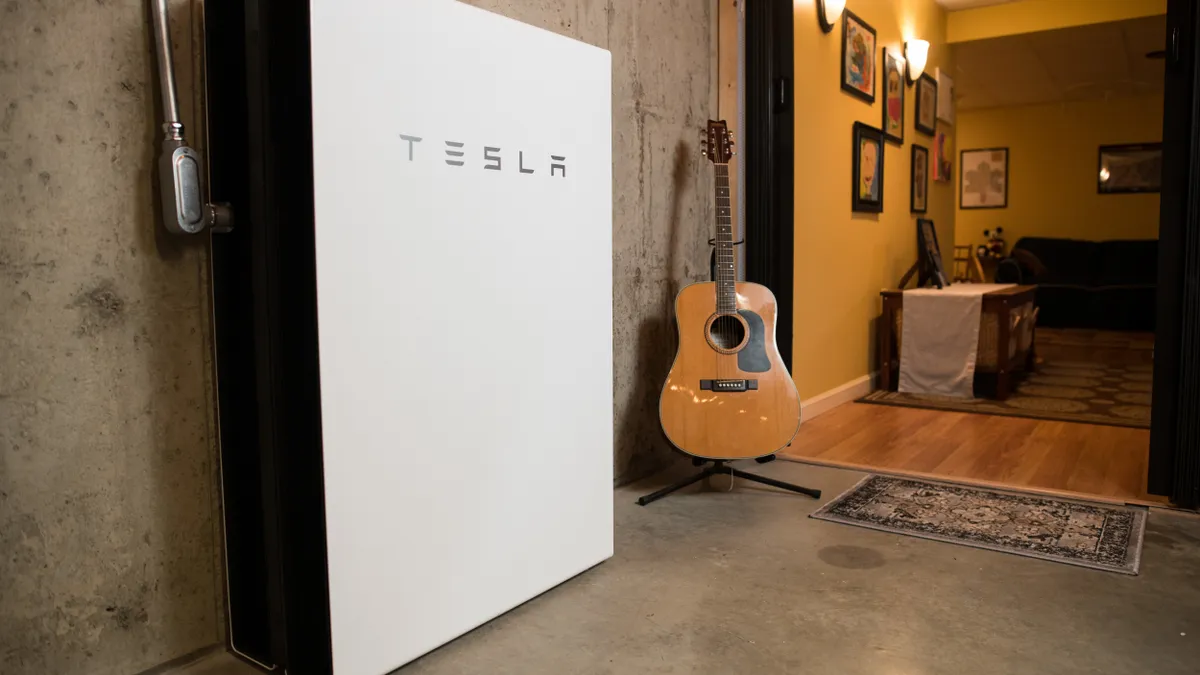Dive Brief:
- Rising customer interest and incentives in more states contributed to a 41% quarter-over-quarter increase in the U.S. residential storage market during the second quarter of 2019, according to the latest U.S. Energy Storage Monitor from Wood Mackenzie Power & Renewables and the U.S. Energy Storage Association (ESA).
- With 35 MW deployed during Q2, the residential storage sector set a new record, the analysis said in their Tuesday report. The previous record of 26 MW was set in Q2 2018.
- The overall U.S. energy storage outlook for all of 2019 fell, however, to 478 MW, due to weaker-than-expected mid-year numbers in some behind-the-meter (BTM) markets and front-of-the-meter (FTM) project delays, the report said.
Dive Insight:
While the U.S. residential storage sector is coming off its most successful quarter ever for deployments, the storage industry as a whole experienced a 49% quarter-over-quarter decline in deployment, from 148.8 MW in Q1 to 75.9 MW in Q2 2019.
Due to this nearly 50% decline, Wood Mackenzie decided to adjust its full-year forecast for the overall storage market. But according to analysts, various indicators suggest the U.S. energy storage market is "maturing."
"The nascent energy storage market in the U.S. continues to grow in fits and starts,” Dan Finn-Foley, head of energy storage for Wood Mackenzie Power & Renewables, said in a statement. “But signposts such as the record residential storage quarter, massive FTM pipeline growth, and innovative policies such as the Massachusetts clean peak standard point towards an industry that is maturing and should stabilize at scale over the next two years.”
Aside from the residential record, Q2 saw double-digit declines in storage deployments. FTM deployments dropped 77% quarter-over-quarter to 18 MW, while BTM deployment (residential and non-residential) fell 17% in comparison to Q1 2019.
However, the FTM pipeline grew by 66% in Q2, "driven by continued large-scale utility procurements and developer interest in ISO markets shown by surging interconnection requests," according to the report.
Despite its adjustment to the full-year forecast, Wood Mackenzie expects the U.S. storage market to grow by roughly tenfold between 2019 and 2024 as a result of supportive policy structures and new opportunities for storage to provide wholesale market services.
The states that saw the most storage being deployed in Q2 included the usual candidates. California led the residential and non-residential markets in terms MWh, with Hawaii in second place on the residential side and Massachusetts coming in second for non-residential BTM storage.
Texas and Maine were the quarter’s top states for FTM storage at 10 MWh each, the analysis showed.
Overall, Q2 saw 165 MWh of storage brought online, with BTM storage (including non- residential) accounting for 83%.
There are a number of bills pending in Congress that aim to boost the prospects for energy storage.
ESA CEO Kelly Speakes-Backman is calling on U.S. lawmakers to support the growth of energy storage by making energy storage an explicit, standalone criteria in the federal Investment Tax Credit. At present, energy storage projects only receive a federal tax break if they are coupled with solar power.












